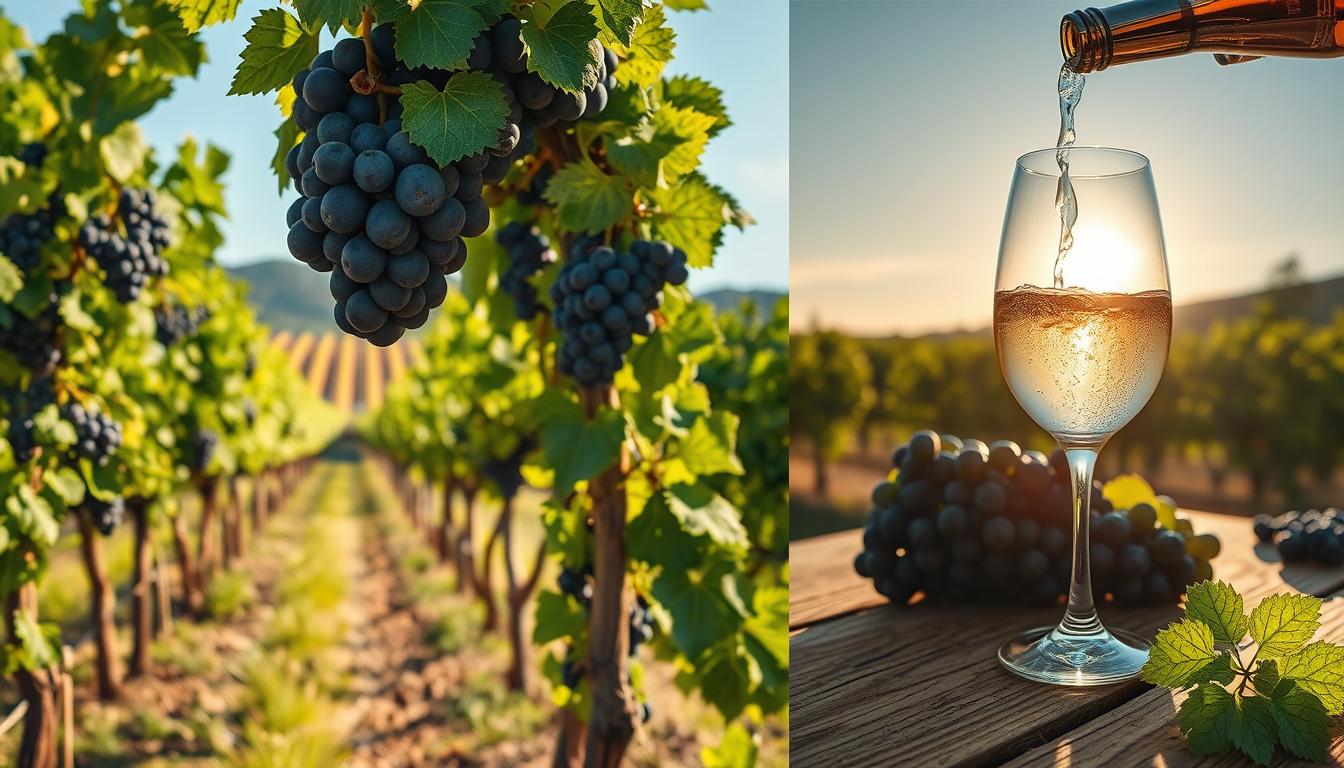Imagine standing in a sun-drenched vineyard, the warm breeze carrying the sweet aroma of ripening grapes. The backdrop of rolling hills and lush vines creates a sense of tranquility that wraps around you like a comforting embrace. In these moments, as the golden rays glisten on their leaves, you may sense that there’s more to wine than just what’s in your glass. Each sip tells a story, a journey from the vineyard to your table. This captivating transformation from grape to glass is an enchanting process filled with passion, dedication, and artistry.
Whether you’re a devoted wine connoisseur or just beginning to explore the world of wine, understanding this journey deepens your appreciation for every bottle. It’s not just about tasting; it’s about experiencing the very essence of the vineyard, where nature and craftsmanship entwine to create the exquisite wines that spark joy and connection among friends and family. Join us as we delve into the intricate life cycle of the vineyard and unravel the magic behind each fine vintage.
Key Takeaways
- The journey from grape to glass involves a deep connection between nature and winemaking craftsmanship.
- Every bottle of wine embodies the intricate work of vineyard life, enriching your wine tasting experience.
- Understanding vineyard cycles enhances your appreciation for the diverse flavors in wines.
- Exploring the vineyard environment offers an opportunity to connect with tradition and artistry in winemaking.
- Wine tasting reveals the unique characteristics of different grape varietals.
- Vineyard events provide memorable experiences that deepen your love for wine.
Understanding the Vineyard Life Cycle
The vineyard life cycle is a fascinating journey that reflects the resilience and beauty of grapevines. A grapevine’s development follows a series of distinct stages, starting with the initial bud break and culminating in the harvest. Each phase carries its own importance, contributing to the overall quality and character of the grapes.
Bud Break
As spring arrives, the vineyard awakens with bud break, marking the emergence of new foliage. This vital phase occurs typically in March or April, depending on the climate. The delicate buds unfurl and indicate that the vines are ready to harness sunlight for energy. With over sixty different species of grapevines, Vitis Vinifera remains the primary contributor to quality wine production worldwide. By the third year of growth, many vines become capable of producing fruit suitable for winemaking.
Flowering
Following bud break, flowering takes center stage. During this period, the vines display clusters of small, delicate flowers necessary for pollination. Good weather conditions are crucial, as adverse weather can impact the success of flowering. The connection between the vineyard’s ecosystem and its ability to produce grapes is pivotal here, as healthy flowers pave the way for fruitful grape clusters.
Harvest and Dormancy
With the culmination of the growing season, the time for harvest arrives, usually between September and November in the northern hemisphere. Viticulturists work diligently to ensure that grapes are picked at their peak ripeness, a process that may involve handpicking or mechanical harvesting. Some vineyards may even choose to harvest at night to preserve the integrity of the grapes. After harvest, the vineyard enters a period of dormancy, where the vines shed their leaves and prepare for the next cycle. This rhythm reflects the inherent sustainability of vineyard life, showing how nature continually rejuvenates itself.
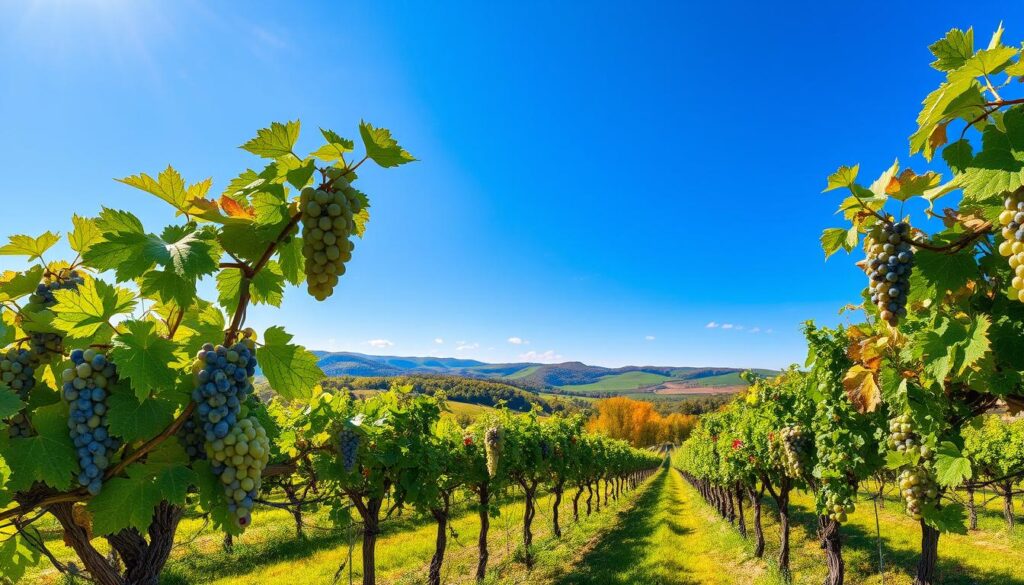
The Journey from Grape to Wine
The transformation of grapes into wine is an intricate journey that reflects both expertise and art. This process begins with careful selection and harvesting, ultimately leading to the delightful bottles you may cherish. Understanding this journey from grape to wine allows you to appreciate the craftsmanship behind each sip.
The Transformation Process
The transformation process comprises several essential steps that contribute to the final product. After the grapes are harvested, whether by hand or machine, they are brought to the winery. Here, the fermentation stage occurs, which can last from ten days to over a month, depending on the wine type. Innovative winemakers often introduce specific yeast strains, enhancing control over the fermentation results. This meticulous attention to detail lays the foundation for rich flavors and aromas.
Crushing and Pressing
Crushing is the first step in extracting juice from the harvested grapes. Modern techniques have replaced traditional foot stomping with mechanical presses, ensuring efficiency and cleanliness. The resulting product, known as ‘must,’ contains the juice along with grape skins and seeds. Pressing follows, where the must is subjected to controlled pressure to separate the juice from solids. This stage notably influences the wine’s flavor profile, as gentle pressure preserves delicate aromas, while firmer pressure extracts deeper richness from the skins, especially in red wines.
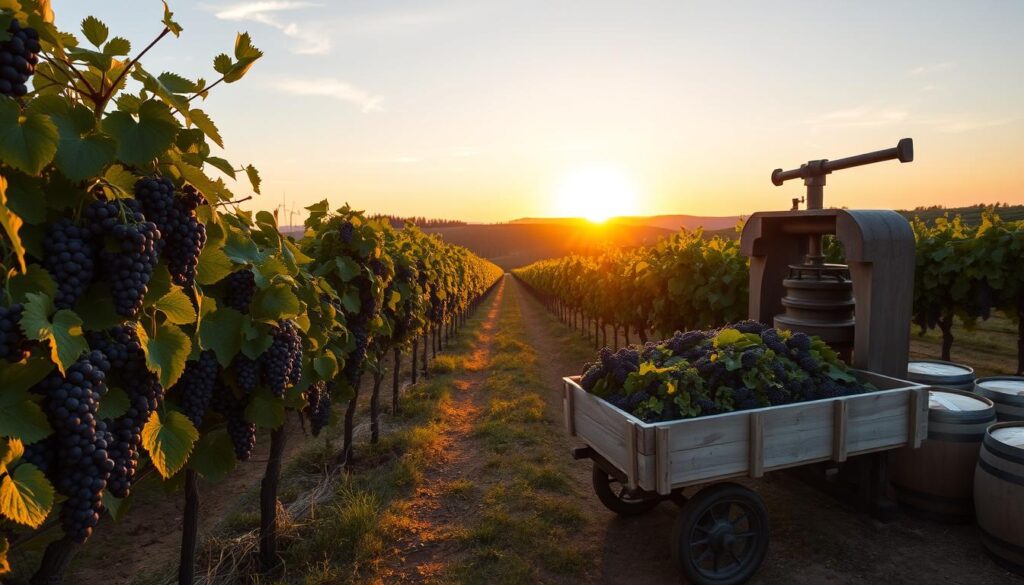
Ultimately, this journey from grape to wine beautifully merges simplicity with intricacy, offering a wide array of choices in reds, whites, and blends. Each step in the process plays a crucial role in defining the wine’s character, making every glass a unique experience.
Exploring Different Grape Varieties
The world of wine is incredibly diverse, with various grape varieties each contributing unique characteristics to the final product. Understanding these grape varieties allows you to appreciate the distinct flavors and aromas associated with each. Below are some key grape varieties that have captured the hearts of wine lovers around the globe.
Cabernet Sauvignon
Renowned for its bold flavor profile, Cabernet Sauvignon stands out among grape varieties. This varietal produces wines characterized by aromas of blackberry, black currant, and cedar. Known for its ageability, Cabernet Sauvignon often finds its way into prestigious bottles, making it a favorite for collectors. With prices ranging from affordable options to nearly $1,000, there’s a bottle for every palate.
Chardonnay
Chardonnay is one of the most extensively planted white grape varieties, with global plantings reaching an impressive 520,000 acres. This versatility allows winemakers to create a range of styles, from crisp and unoaked to rich and buttery. The flavor profile often reflects the terroir, making it a fascinating choice for any wine enthusiast.
Merlot
Merlot is known for producing smooth, approachable wines with delightful flavors of baked cherry, plum, and hints of chocolate. This grape variety became extremely popular for its palatable character, often appealing to both novice and experienced wine drinkers. Following a dip in popularity during the 1990s, Merlot has made a strong comeback and continues to be widely planted across the world.
Pinot Noir
Among the grape varieties, Pinot Noir is celebrated for its complexity and elegance. Although it is challenging to cultivate, the resulting wines showcase immense variation in expression. Typically, Pinot Noir wines carry notes of strawberry, cranberry, and earthy elements like mushrooms. This varietal’s unique qualities make it a reward for those willing to explore beyond the mainstream selections.
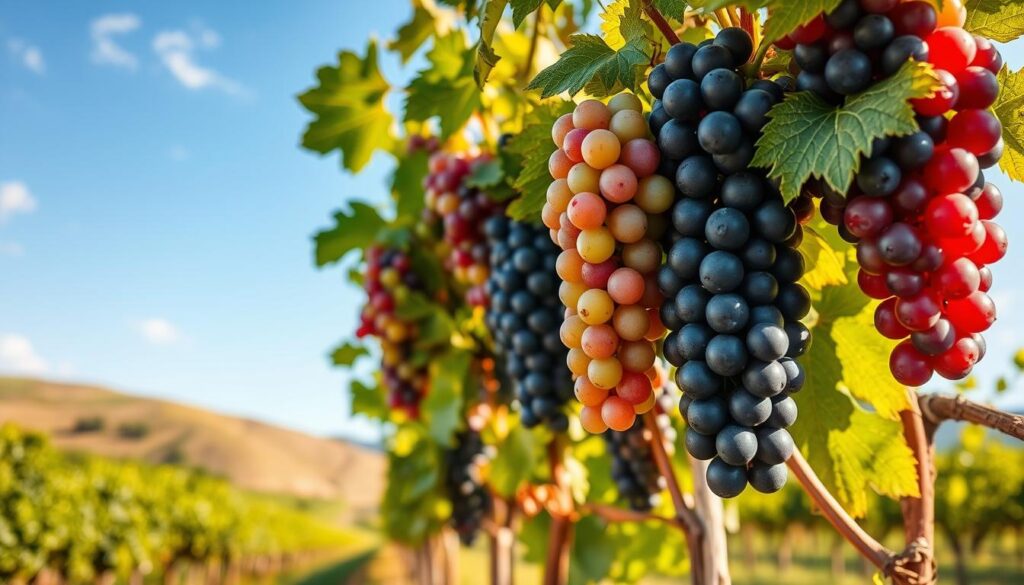
| Grape Variety | Aroma/Flavor Profile | Typical Price Range |
|---|---|---|
| Cabernet Sauvignon | Blackberry, black currant, cedar | Under $10 – $1,000 |
| Chardonnay | Crisp, buttery, oak | Varies widely based on region and style |
| Merlot | Baked cherry, plum, chocolate | Varies, typically moderate pricing |
| Pinot Noir | Strawberry, cranberry, earthy | $30 – $40 for premium wines |
Harvesting Wine Grapes: Timing and Techniques
Timing plays a crucial role in the process of harvesting wine grapes. The right moment to harvest can significantly influence the wine’s final quality and flavor profile. Winemakers consider various factors, such as sugar levels and acidity, to determine when to harvest. This balance is essential, as cool growing conditions often lead to grapes with heightened acidity and lower sugar, while warmer climates yield grapes with rich, sugary profiles.
When to Harvest
The wine harvest season varies by region. In the Pacific Northwest, harvesting typically spans from late August to November, while California’s vineyards begin their harvest in August and wrap up by October. For grapes meant for sparkling wines, picking occurs as early as August to maintain higher acidity levels. White wines follow, often harvested later than sparkling varieties, with red wines being last—picked in October or early November.
Handpicking vs. Mechanical Harvesting
Two primary methods exist for harvesting wine grapes: handpicking and mechanical harvesting. Handpicking is favored for its careful approach; this method ensures that only the ripest grapes are selected, ultimately preserving quality. Despite being labor-intensive, handpicking demonstrates a commitment to quality over quantity.
On the other hand, mechanical harvesting, which emerged in the 1960s, offers efficiency. Many vineyards utilize this technique for its cost-effectiveness and speed. Recent advancements in technology allow some mechanical harvesters to incorporate features like optical sensors and forced air for grape selection. While effective, mechanical methods can sometimes result in damaged grapes, which may impact the wine’s character.
Ultimately, the choice of harvesting method intertwines with the vineyard’s philosophy—whether to prioritize quality through careful handpicking or to embrace the efficiency of mechanical harvesting—both influence the overall expression of the wine.
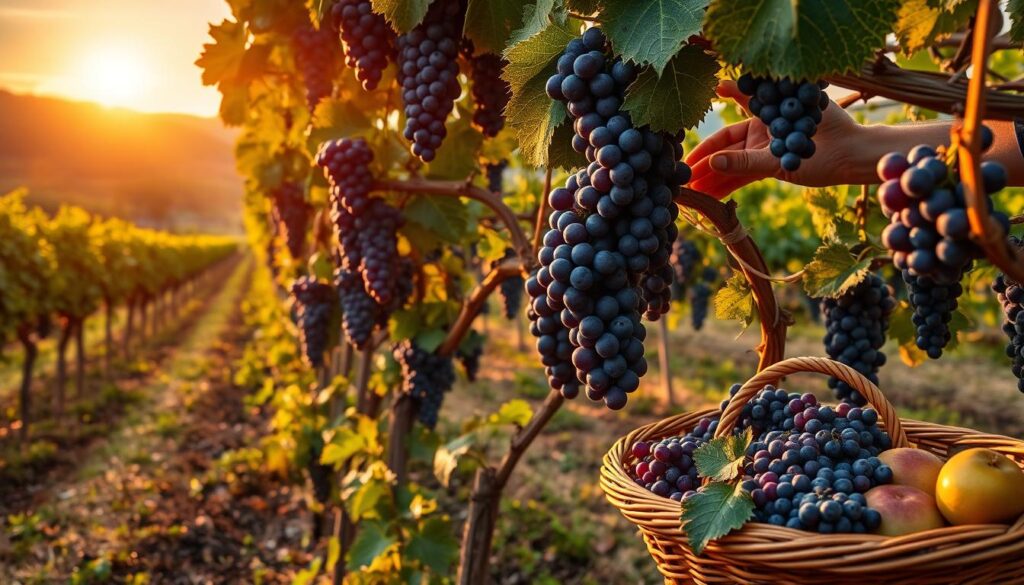
Celebrating Vineyard Events: Wine Tastings and Tours
Attending vineyard events offers a unique opportunity to dive deeper into the world of wine. With activities centered around wine tastings and vineyard tours, you can enhance your understanding and appreciation of this celebrated beverage. These events vary by type, catering to diverse interests and preferences.
Types of Vineyard Tours
Vineyard tours come in various styles, allowing guests to choose an experience that suits their interests:
- Guided Tours: Professional hosts lead you through the vineyard while explaining the winemaking process.
- Casual Strolls: Take a leisurely walk through the vines, enjoying the beauty of your surroundings.
- Themed Events: Look for seasonal tours that highlight specific aspects of vineyard life, such as harvest time.
What to Expect During a Wine Tasting
Wine tastings provide a hands-on experience where you can sample various wines. At events like those hosted by Brooklyn Winery, attentive staff guide you through selections produced on-site. These tastings often include:
- Curated Flights: A selection of wines for sampling, with tasting notes provided to enhance understanding.
- Food Pairings: Enjoy expertly designed food pairings crafted by the Executive Chef, enhancing the overall experience.
- Engaging Activities: Participate in workshops focused on wine and cheese pairings, wine trivia, or guided tastings.
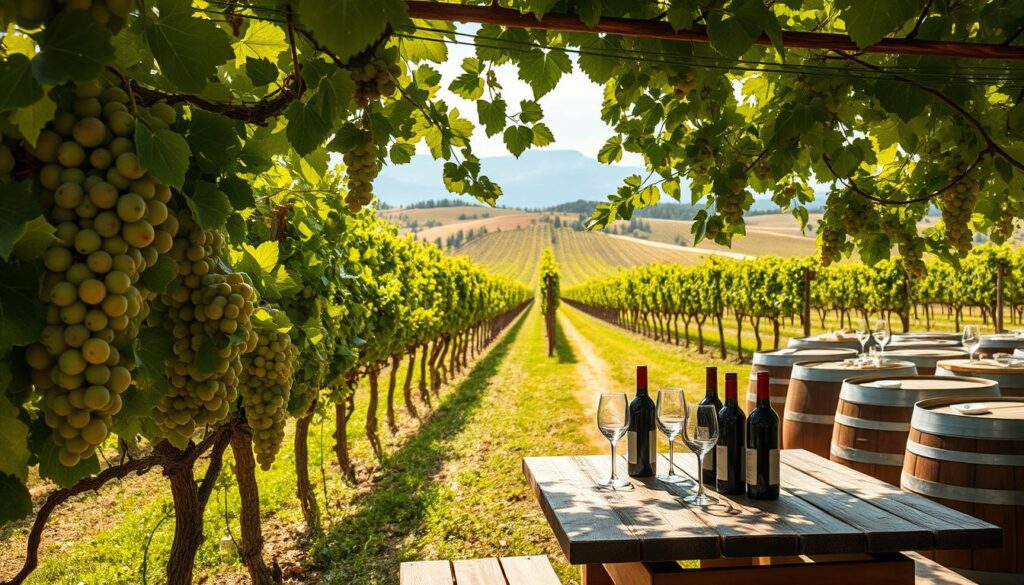
Creating Memorable Vineyard Weddings
Vineyard weddings offer a unique blend of elegance and natural beauty, capturing the essence of romance. Choosing the right location plays a crucial role in planning your event. A vineyard with stunning scenery and excellent amenities can elevate your special day, providing picturesque backdrops ideal for both ceremonies and receptions.
Choosing the Right Location
The ambience of a vineyard contributes significantly to the overall feel of your wedding. With options ranging from lush green landscapes in spring to breathtaking foliage in autumn, vineyard weddings adapt beautifully to seasonal changes. Here are some essential factors to consider when selecting your venue:
- Scenery: Look for breathtaking views and vibrant vineyard settings that align with your vision.
- Amenities: Ensure the venue has necessary facilities for catering, restrooms, and guest comfort.
- Accessibility: Choose a location that is convenient for your guests, considering parking and transportation.
- Capacity: Make sure the venue can comfortably accommodate your guest list.
Tips for Planning Your Event
Planning your event in a vineyard setting can enhance the experience for you and your guests. Collaborating with vineyard staff can help streamline the process and reduce stress. Here are some tips for organizing memorable events at a vineyard:
- Custom Packages: Many vineyards offer tailored event packages, including wine tastings led by knowledgeable staff.
- Catering Options: Partner with local food vendors or arrangements for food service, which can elevate the event while supporting community businesses.
- Seasonal Considerations: Plan for different seasons by utilizing outdoor areas equipped with necessary accommodations for comfort.
- Compliance: Ensure to comply with local regulations and secure necessary permits well in advance.
- Staff Utilization: Utilize current staff for event management to enhance their skills and contribute to business growth.

Choosing a vineyard for your wedding not only creates a romantic atmosphere but also allows for unforgettable memories through personalized touches such as wine-themed elements. By carefully planning your event and considering the unique features each vineyard offers, you can craft a celebration that resonates with elegance and charm.
The Role of Terroir in Winemaking
Understanding terroir is a fundamental aspect of appreciating the world of winemaking. Terroir encompasses the unique environmental features that influence grape growth, including climate, soil type, and geographical nuances. This concept significantly shapes the wine flavors that define various regions, making it essential for anyone exploring the complexities of wine.
What is Terroir?
At its core, terroir is more than just a buzzword in the wine industry. It represents the interplay of natural elements such as soil composition, local climate conditions, and surrounding flora and fauna. For example, wines from warmer regions tend to exhibit lower acidity and higher sugar levels, which yield richer, bolder flavors. In contrast, cooler climates often result in wines with higher acidity and lighter body, offering a more delicate profile.
How Terroir Influences Wine Flavors
The impact of terroir on wine flavors is profound. Specific soil types—ranging from sand and clay to limestone and volcanic soil—affect water drainage and nutrient availability, ultimately guiding grape development. Vines planted in rocky terrains can produce wines with distinct minerality, while those in nutrient-rich soils may yield fruitier wines. Additionally, microclimate variations within a vineyard can lead to differences in how grapes ripen, influencing their sugar levels and acidity.
The relationship between terroir and wine extends to historical contexts. Ancient winemaking practices recognized the significance of terroir long before modern classifications took shape. The implementation of regulatory frameworks like the AOC in France further emphasized the importance of terroir in defining a wine’s origin and identity.
The study of terroir raises awareness of how factors like climate change can present both challenges and opportunities for winemaking. Regions such as Napa Valley, Bordeaux, and Barossa Valley each produce Cabernet Sauvignon, yet their wines reflect unique characteristics due to their specific terroir. Recognizing and appreciating these nuances leads to a deeper understanding of wine, enhancing your tasting experience and connection to the land.

Finding a Vineyard Near You
Discovering a vineyard near you invites an exploration of flavor and community. Local vineyard visits offer a chance to unwind while enjoying the scenic landscapes and the unique characteristics of each region’s wine. You can not only support local businesses but also enhance your appreciation for wine through personal engagement with passionate vintners.
Benefits of Local Vineyard Visits
When you choose to visit a nearby vineyard, several advantages unfold:
- Support local businesses: Your patronage contributes to the local economy.
- Unique experiences: Many vineyards offer distinct varietals and regional specialties.
- Accessibility: Many vineyards are just a short drive away, making them perfect for a day trip.
- Varied options: Some vineyards allow walk-ins, while others may require reservations for tastings or tours.
- Diverse pricing: Whether you’re looking for an upscale experience or a more budget-friendly outing, options abound.
Popular Vineyard Locations Nationwide
Across the United States, popular vineyard locations draw wine enthusiasts looking for diverse experiences. In New York, over 24 wineries and vineyards are close to NYC, providing a wealth of options ranging from scenic views of Seneca Lake to urban rooftop settings in Brooklyn. Here are some noteworthy spots:
| Vineyard Name | Specialty | Location | Notes |
|---|---|---|---|
| Brotherhood Winery | Oldest Operating Winery | Washingtonville, NY | Rich in history, part of America’s winery legacy. |
| Old York Cellars | Various Wines and Tapas | Sourland Mountains, NJ | Open from 12-6 pm for tastings. |
| Whitecliff Vineyard & Winery | Over 20 Varietals | Gardiner, NY | Variety of grapes grown on scenic grounds. |
| Torne Valley Vineyards | Limited Selection | Milburn, NY | Picturesque location ideal for a relaxing visit. |
| City Winery | Wine and Dining | Montgomery, NY | Devotes a portion of land to vine cultivation. |
Engaging with these popular vineyard locations enhances your wine journey, offering insights into the craft while establishing connections within your community. Enjoy tasting sessions, live music, and beautiful views, solidifying your memories of local vineyard visits.
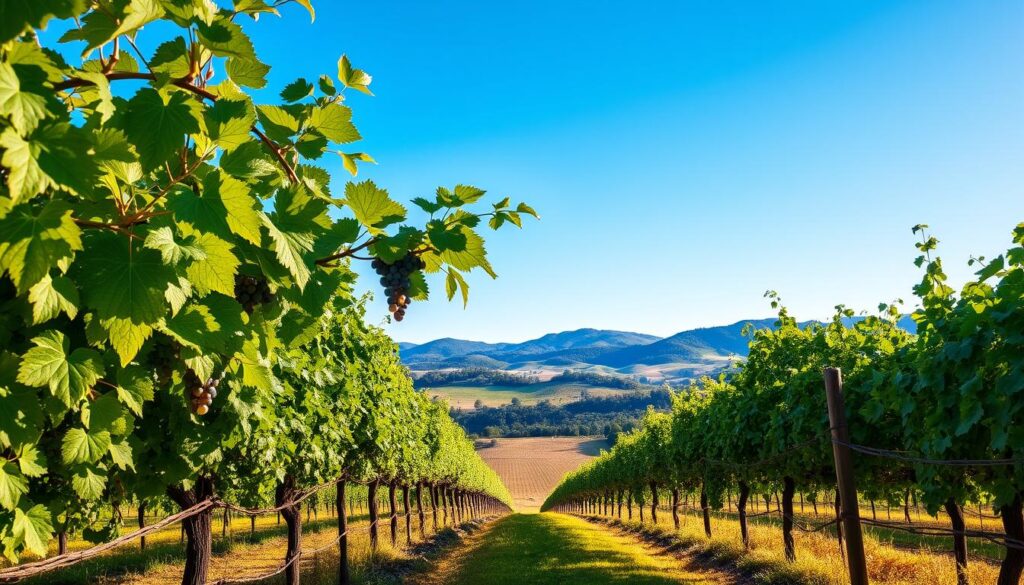
Vineyard Stories: Passion Behind the Creation
Vineyard stories often reveal the heart and soul of winemakers who pour their passion into every bottle they create. These narratives capture the dedication and artistry inherent in the winemaking journey. By learning about the winemakers behind your favorite wines, you gain deeper insights into the craftsmanship that goes into each vintage.
Meet the Winemakers
Transitioning from one generation to the next, many vineyards reflect a rich family heritage. For instance, a father established a 35-acre vineyard in California’s San Joaquin Valley post-World War II. His sons took over, achieving a remarkable threefold increase in crop yield compared to their father’s management. This significant transformation highlights the blend of tradition and innovation that defines modern winemaking.
Personal Experiences and Craftsmanship
Craftsmanship in winemaking goes beyond mere technical skill; it encompasses the personal experiences that shape each winemaker’s approach. Winemakers often emphasize the importance of understanding the unique conditions of their vineyards, which allows them to enhance the quality of their wines. A podcast hosted by Ruth Amo-Agyei, Michael, and Travis showcases transformational vineyard stories, resonating with a wide audience. They aim to build a community of winners, celebrating the essence of pursuing one’s passions and relentlessly improving their craft. This commitment to quality fosters an environment where every bottle tells a compelling story rooted in hard work and dedication.

| Year | Crop Yield | Winemakers’ Reflections |
|---|---|---|
| Year 1 | Initial Yield | Learning the Land |
| Year 2 | Double Yield | Building Community |
| Year 3 | Triple Yield | Founding Their Why |
Conclusion
As you reflect on the journey from grape to glass, it is crucial to appreciate the intricate connection between nature and the art of winemaking. The vineyards, particularly those nestled in the Polkadraai Hills of Stellenbosch with their unique combination of decomposed granite and iron-rich duricrust soils, provide a foundation that profoundly affects the quality and character of the wines produced. The south-east facing slopes benefit from a maritime influence from False Bay, enriching the vineyard experience.
Understanding the vineyard life cycle, from bud break to harvest, along with the diverse grape varieties, enhances your ability to fully relish wine tasting events. Each component, including total acidity at 5.6 g/l and a subtle residual sugar of 2.4 g/l, contributes to the enchanting flavors you encounter in every bottle. With each sip, you are not just indulging in a beverage but embracing the legacy and craftsmanship behind it.
By seeking out local vineyards and involving yourself in vineyard events, you create lasting memories and deepen your connection to this timeless tradition. Whether celebrating milestones or simply enjoying the ambiance, your appreciation for the artistry of winemaking will flourish, inviting you to raise your glass to the magic that lies within every vineyard. Immersing yourself in the vineyard events allows you to witness firsthand the dedication and craftsmanship that goes into creating each bottle of wine. From the careful selection of grapes to the precise blending of flavors, you’ll gain a deeper understanding and appreciation for the art of winemaking. By participating in these events, you’ll not only savor the final product but also gain insight into the labor of love that goes into making every vintage truly exceptional.
